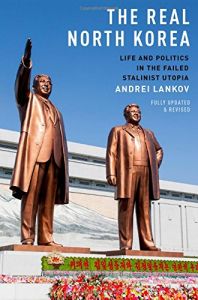Join getAbstract to access the summary!

Join getAbstract to access the summary!
Andrei Lankov
The Real North Korea
Life and Politics in the Failed Stalinist Utopia
Oxford UP, 2014
What's inside?
A detailed, knowledgeable overview of North Korea and its society, daily life, domestic politics and international strategies.
Recommendation
Insight into North Korea’s regime is in short supply. If the Kim rulers were irrational or mad, it would be hard to explain why their dynasty has outlasted the communist governments of Eastern Europe, how it has survived famine and economic failure or how it has held its own through decades of tensions with the world’s superpowers. Professor Andrei Lankov lifts the veil on North Korea and sheds vital light on the reality of its regime, its society and its strategic computations. Lankov, a highly respected scholar on Korea, draws on decades of research, including communications with diplomats and refugees, and his experiences in North Korea as a university exchange student. Although some critics accuse Lankov of offering a Soviet-centric analysis – he was born in Leningrad and received his education in the Soviet Union – he provides a rich, nuanced, accessible overview of North Korea’s history and contemporary society, and a sobering analysis of its possible future.
Summary
About the Author
Andrei Lankov is professor of History at Koomkin University in Seoul, South Korea. A native of St. Petersburg, he studied in North Korea as an exchange student. His books include North of the DMZ: Essays on Daily Life in North Korea and From Stalin to Kim Il Sung: The Formation of North Korea, 1945-1960.
















Comment on this summary